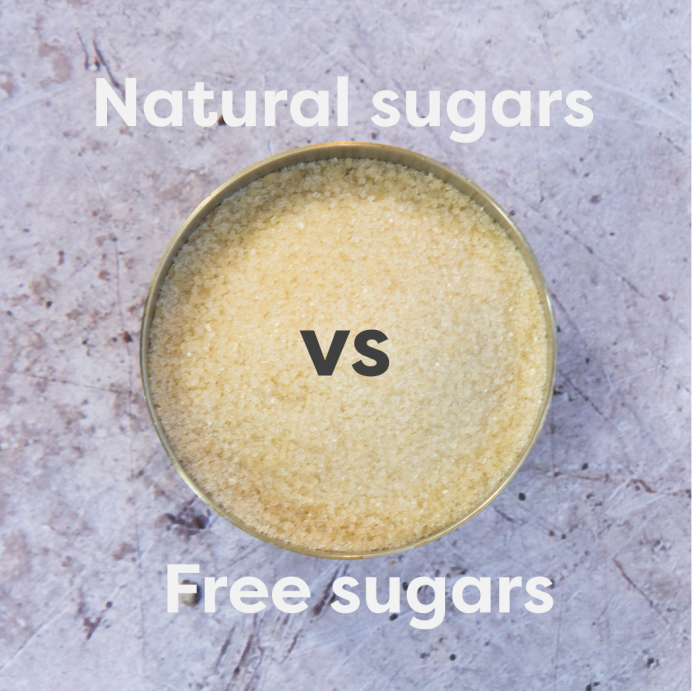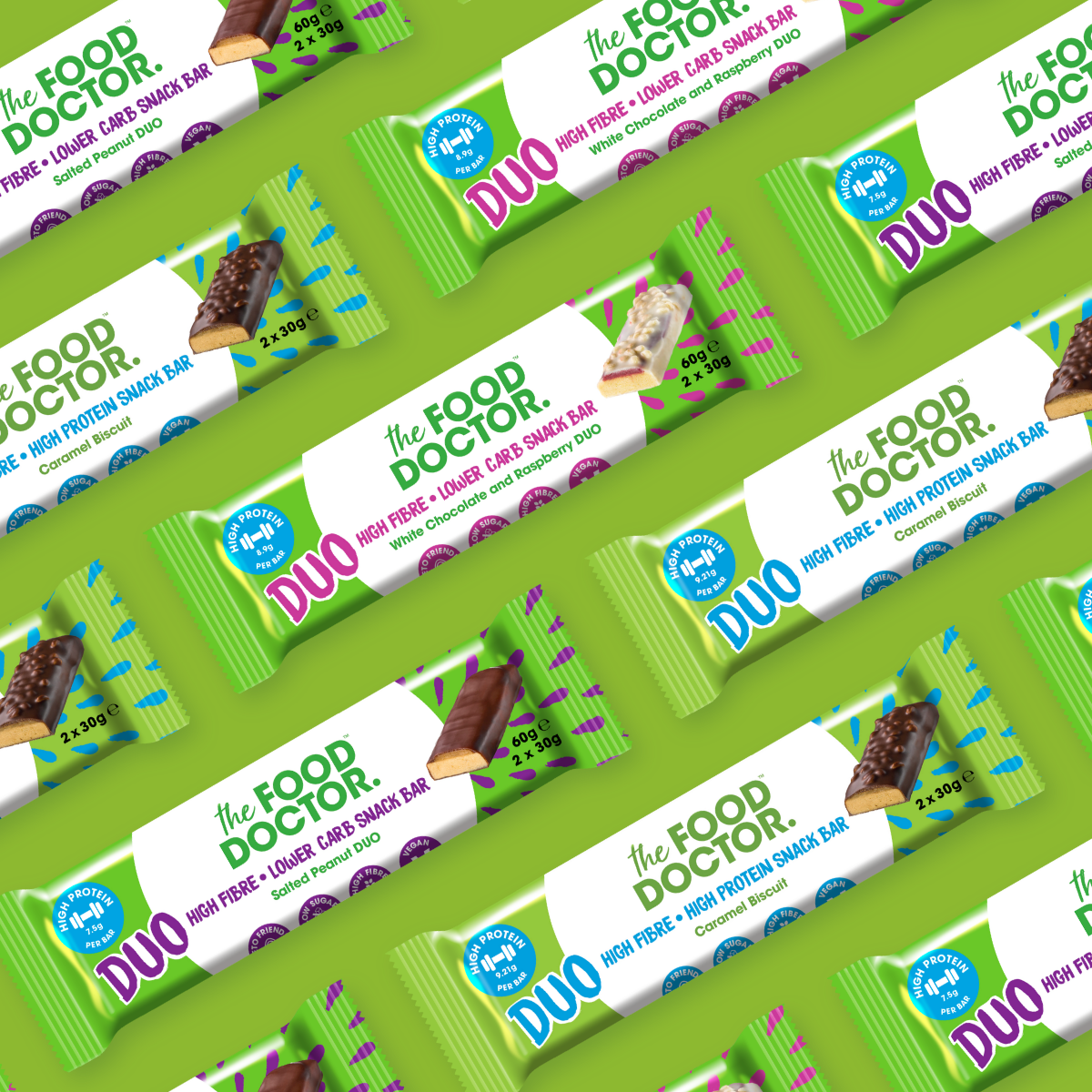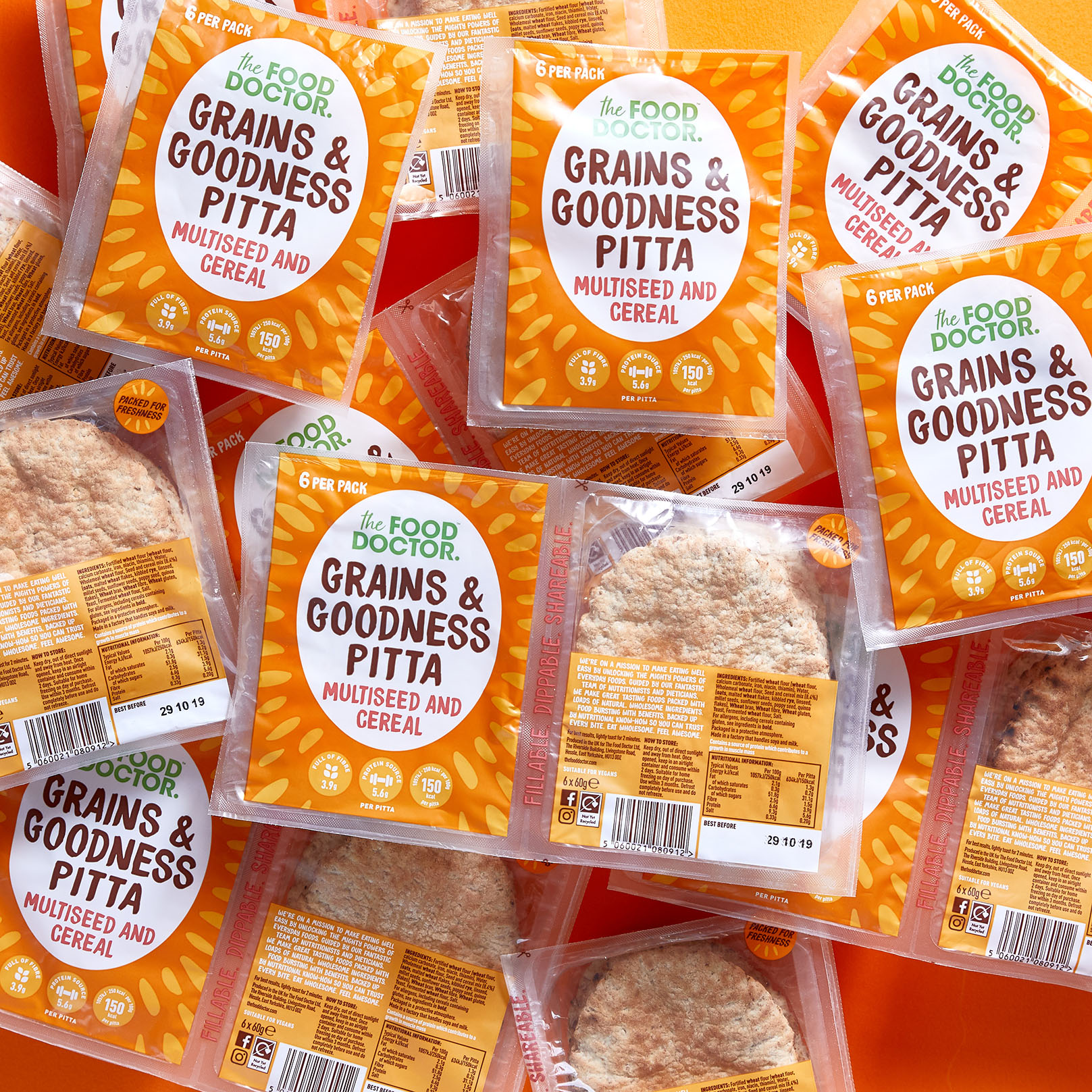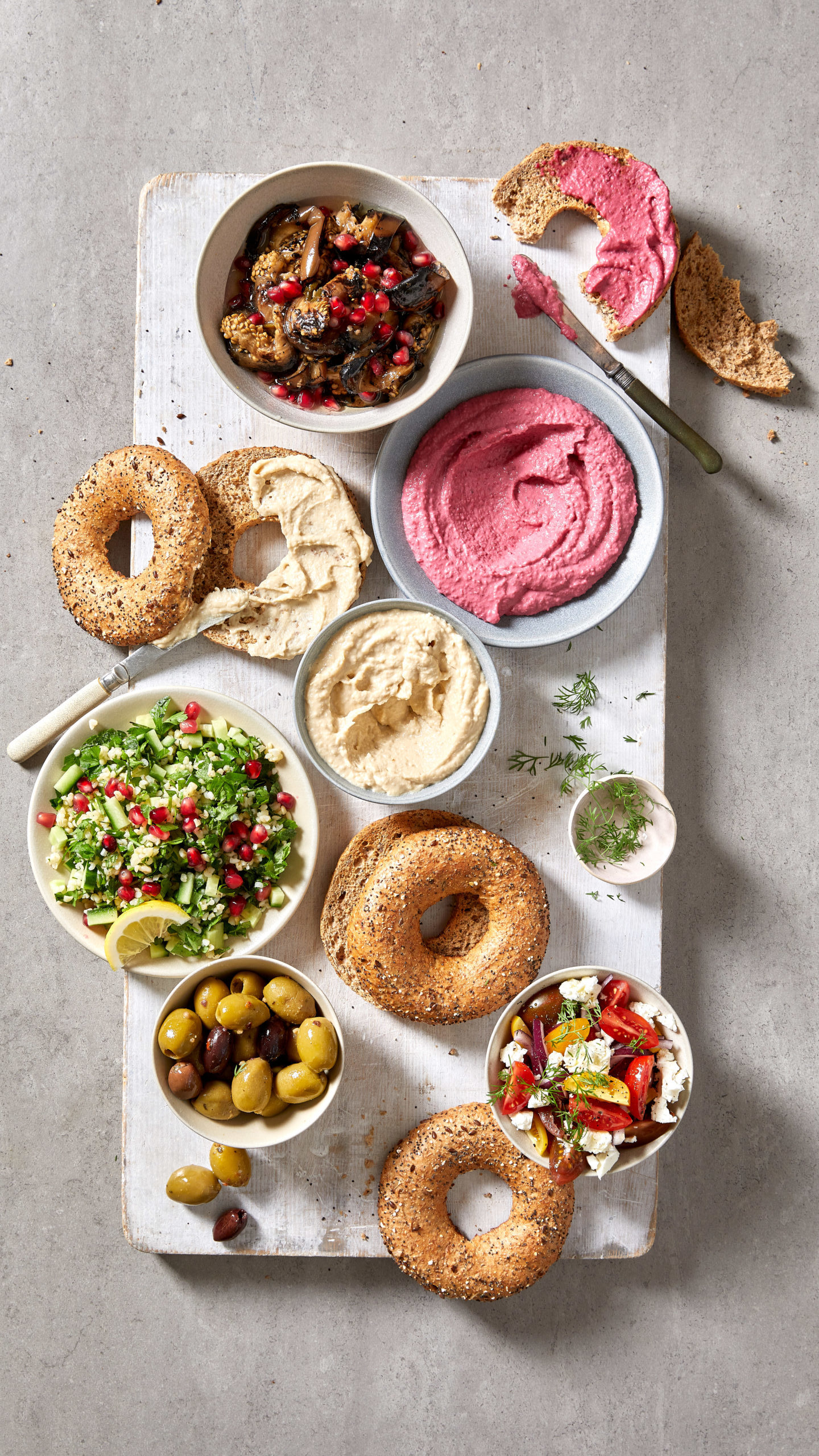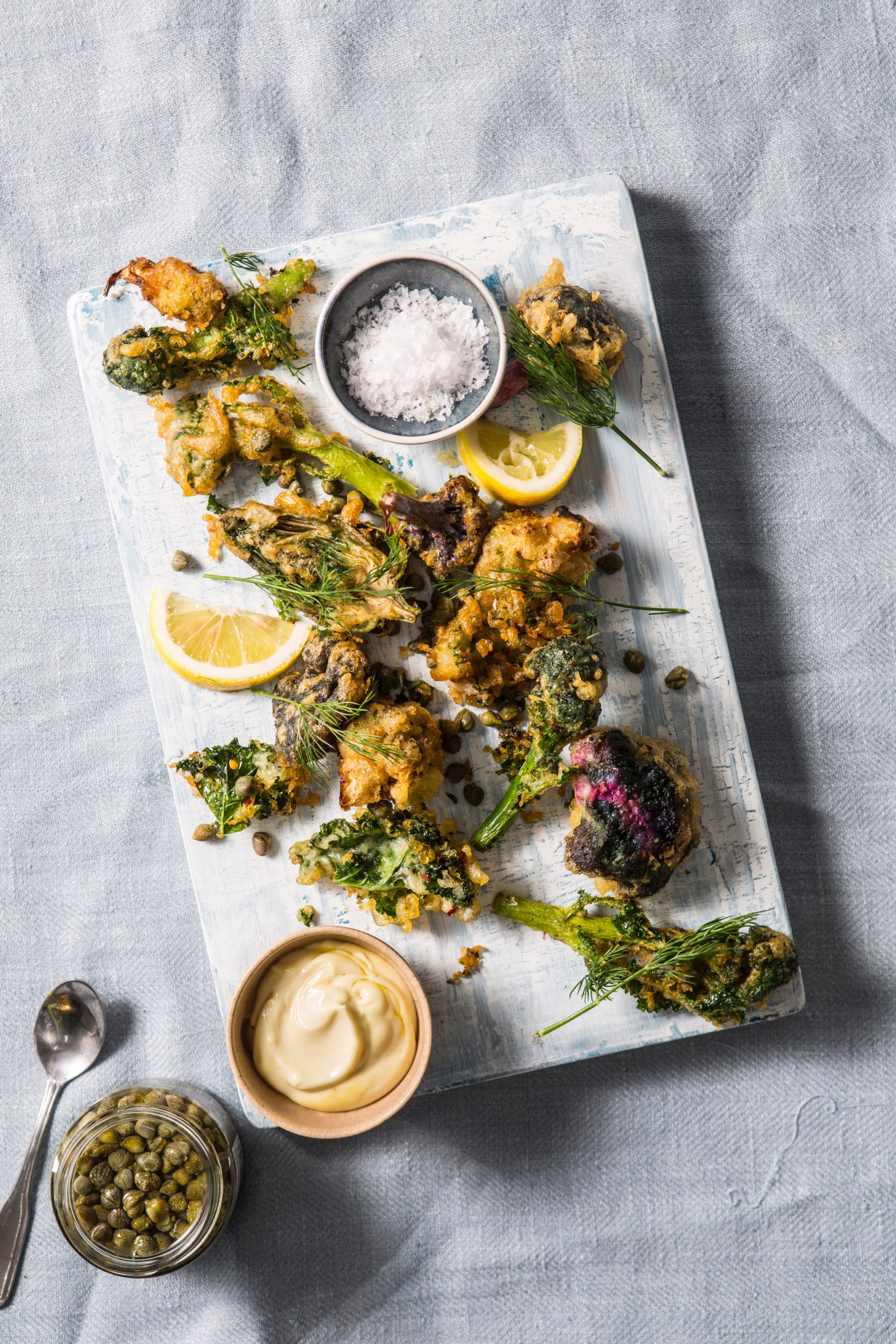Post by Azmina Govindji @AzminaNutrition
Sugar never fails to hit the headlines. Here we decipher the science for you and give you top tips on what to look out for on food labels, as well as five simple ways on how to eat less sugar.
Cutting down on sugar is still a government priority – and it’s “free sugars” rather than natural sugars that we need to be mindful of. It is recommended that we have no more than 5% of our daily calories from free sugars. The sugars that come naturally from fruit and veg are mixed with healthy nutrients like fibre, so you don’t need to worry about cutting down on these.
What does 5% free sugars mean?
Free sugars: sugar added to food, plus sugars naturally present in honey, syrups and unsweetened fruit juices. Sugar-rich foods like cakes, biscuits and sweet pastries tend to be low in nutrients and highly processed, so cutting down on these foods makes a lot of sense.
Natural sugars: sugar naturally present in whole fruits (fruit sugar) and dairy products (milk sugar). Fruits that contain sugar also bring you fibre, vitamin C and potassium. Milk and yogurt provide protein, calcium and iodine.
Adults: no more than 7 tsp of free sugars / 35g a day.
How do we know if a sugar is free?
Currently, it isn’t easy to know whether the sugars in a food you’re about to buy has free or natural sugars, because labels only tell you the total sugar content. The same applies to the Change4life SugarSmart app, though labels and the app do help you to compare products and choose foods that are lower in both free and natural sugars.
3 ways to look beyond the sugar
Research suggests that when we eat too much sugar (especially as sugar-rich drinks), and this contributes to a higher calorie intake, so it makes sense to reduce our sugar intake. But we need to be practical and we need to do this in a way that doesn’t compromise our intake of important nutrients.
So, when you’re looking at a product that has sugar (remember it’s total sugar that’s on the label), think beyond the sugar to assess if that food is going to give you positive health benefits. For example:
1. Whole grain breakfast cereals may contain sugar, but they bring important fibre, and we’re currently not reaching the 30g fibre a day target. They are typically fortified too, so you get a healthy dose of folic acid, B vitamins or iron, for example. Ditch the really sugary types and compare labels of different brands, so you choose a whole grain cereal that’s lowest in added sugar.
2. A jar of pasta sauce may look like it has a lot of sugar, but the sugar on the label also includes the natural sugars coming from tomatoes, which you don’t need to cut down on. A convenient jar encourages you to make pasta at home – a much better habit than relying on a takeaway or ready meal!
3. A wholesome fruity loaf might have some honey in it, but added nuts, seeds or oats make it a better choice than a blueberry muffin. More fibre and good fats! Just be aware of the calories and sugar content and choose those with the lowest amount of sugar per serving.
5 top sugar-smart tips
1. Many products use traffic light labelling on the front of the pack. Choose foods with a green traffic light for sugar most of the time. The odd amber rating isn’t going to do you any long-term harm, but going green is generally a good policy.
2. Check out the total sugars per serving, and think about whether the food is giving you any extra benefits.
3. Compare brands and choose the product with the lowest sugar per serving.
4. If you decide to choose something you know is high in sugar, balance it out by cutting down on sugars for the rest of the day.
5. Use dried or fresh fruit in baking to help you reduce free sugars.
Written by Azmina Govindji, Consultant Nutritionist & Registered Dietitian
